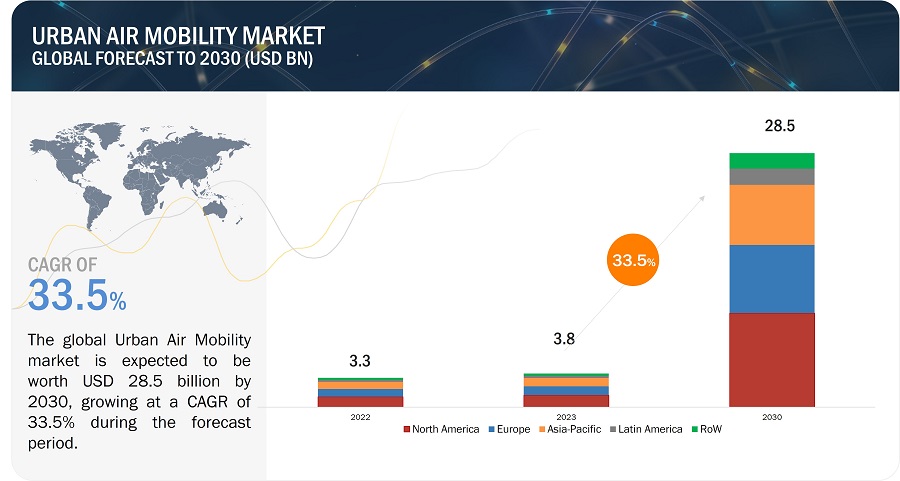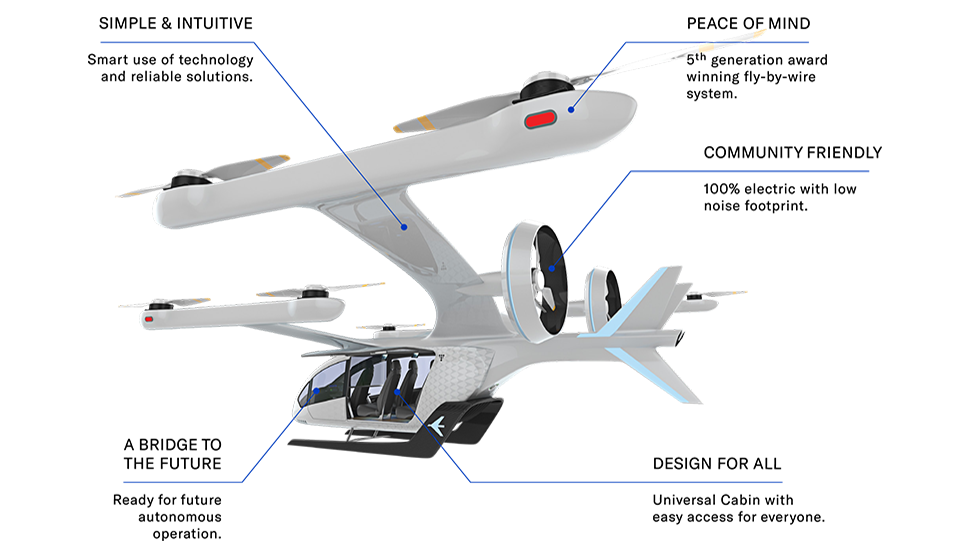Way back in 1940, Henry Ford predicted, "Mark my words. A combination of airplanes and motorcars is coming. You may smile, but it will come." Today, as we enter 2024, Ford's vision seems closer to reality. The concept of "Personal Air Vehicles" (PAVs) is no longer confined to science fiction. The future of urban air mobility (UAM) is on the horizon, with significant advancements propelling the development of emerging aviation transport for passenger and cargo travel. Federal Aviation Administration (FAA) is working with NASA on the Advanced Air Mobility (AAM) National Campaign to drive this transformation.
Defining Urban Air Mobility
As defined by NASA, urban air mobility encompasses safe, efficient, convenient, affordable, and accessible air transportation systems for passengers and cargo. This revolutionary approach aims to move people and goods swiftly and safely within congested urban environments. The primary focus is on metropolitan areas, where UAMs can significantly reduce travel inefficiencies caused by traffic congestion and high logistics costs. UAMs are poised to drive future business innovations while addressing critical urban transportation challenges by enhancing long-range travel times and reducing traffic jams.
Challenges and Acceptance
Despite the futuristic allure of flying cars depicted in various forms of media, the reality has been less glamorous. The long-standing question, "Where's my flying car?" underscores the persistent challenges in developing a fully functional, commercially viable air vehicle. The successful integration and acceptance of UAM depend on harmonizing several critical elements: efficiency, sustainability, safety, certification, and societal impact. Addressing these factors is crucial for overcoming historical failures and achieving widespread adoption.
Insights from Research
Recent research from the Georgia Institute of Technology has provided valuable insights to help us better understand the potential and challenges of UAM. According to a comprehensive review and meta-analysis conducted by researchers at the Georgia Institute of Technology, the number of publications on UAM grew exponentially from 2015 to 2019, indicating a surge in interest and advancements in this field. This analysis highlights critical areas for future development:
- Refining demand models
- Creating high-fidelity simulation models
- Addressing one-way demand and parking constraints
- Developing realistic energy profiles for UAM vehicles
Such research is crucial for informing the next steps in UAM development and ensuring its successful implementation.
Potential Market and Economic Impact
Given the promising research findings, the market potential for UAM is substantial. According to Booz Allen Hamilton, the UAM market in the United States could be worth up to $500 billion in the near term and grow to $1 trillion by 2040. Deloitte estimates that the global market for UAM passenger services could reach $32 billion by 2035. These projections underscore the significant economic impact UAM could have on the transportation sector.
Researchers have identified several cities in the United States as potential hubs for UAM services. Cities like New York, Los Angeles, and Dallas are at the forefront due to their high population density, significant traffic congestion, and existing infrastructure. These urban centers provide fertile ground for deploying UAM services, offering substantial time savings over conventional ground transportation.
Practical Applications and Ongoing Developments
With a clear market potential, practical applications of UAM are beginning to take shape. On-demand helicopter operations provide modern-day examples of UAM services. Companies like BLADE operate between various locations in Manhattan and the main airports in New York City, offering flights bookable within 30 minutes of departure at costs around $195 per trip. Uber's collaboration with HeliFlite provides similar services, demonstrating the feasibility and consumer interest in such rapid transit options.
Analysts are continuously refining the economic viability of these services.
For instance, Uber Elevate projects that advancements in manufacturing and autonomy could reduce the cost of a passenger helicopter service from $8.93 per passenger mile to as low as $0.44 per passenger mile. This cost indicates a significant reduction in operational costs compared to current helicopter services, potentially making UAM more accessible to a broader audience.
Overcoming Intellectual Property Challenges
As urban air mobility evolves, so do the complexities surrounding intellectual property (IP) and data protection. Forrester analyst Chase Cunningham emphasized, "If you aren't monitoring your data, your intellectual property is walking out the door, and you'll be out of business in twenty years." This stark reality highlights the importance of robust IP management and protection in the burgeoning UAM industry.
Evalueserve's IP and R&D services offer comprehensive solutions to safeguard and leverage intellectual property assets. By providing strategic IP audits, process redesigns, and innovative consulting, Evalueserve ensures businesses in the UAM sector can navigate the complexities of IP management effectively. This proactive approach protects valuable innovations and drives sustainable growth and competitive advantage in the rapidly evolving transportation landscape.
Conclusion
Urban air mobility will redefine future transportation, bringing Henry Ford's century-old prediction to life. While challenges remain, the collaborative efforts of industry leaders and regulatory bodies are paving the way for a new era of urban transportation. As businesses capitalize on these advancements, ensuring robust IP protection and strategic innovation management will be critical to success. Partnering with experts like Evalueserve can provide the necessary tools and insights to thrive in this transformative industry, securing a competitive edge in the age of urban air mobility.
Talk to One of Our Experts
Curious about the future of transportation and how Urban Air Mobility can benefit your business? Let’s discuss the opportunities and challenges.




